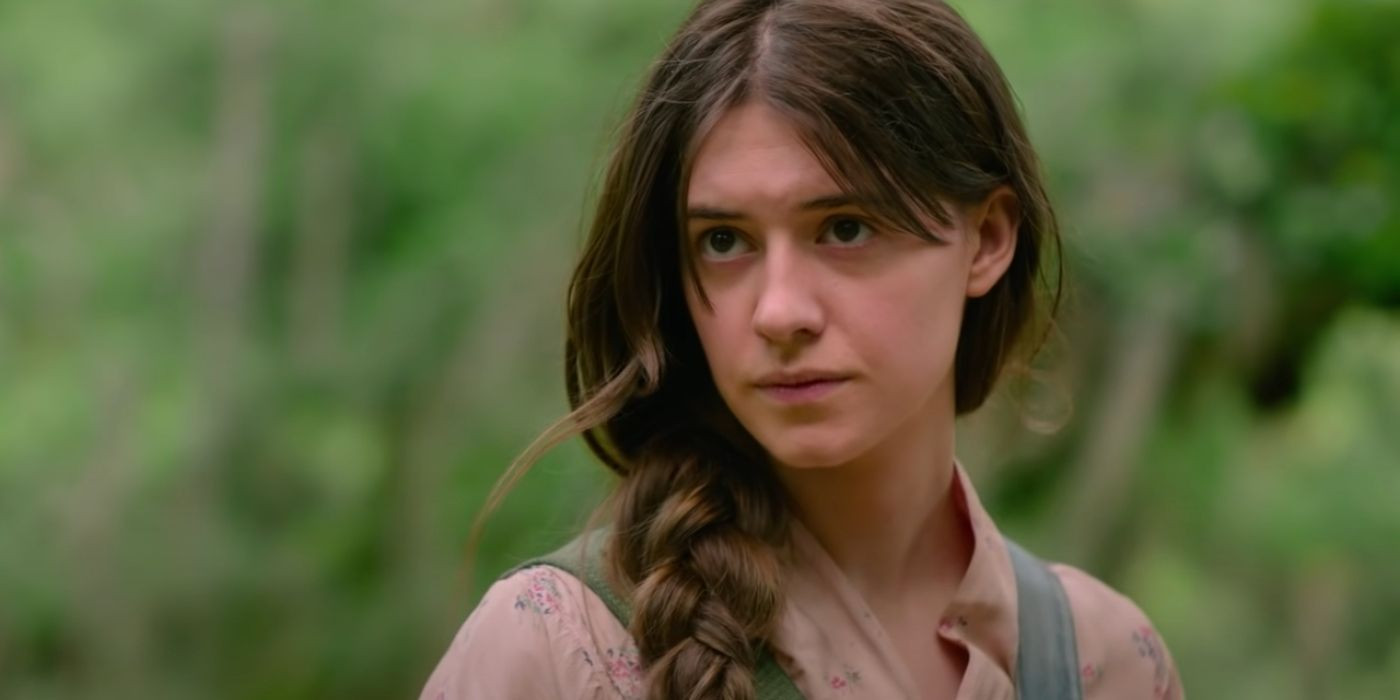The movie Where the Crawdads Sing, adapted from Delia Owens’ bestselling novel, captivated audiences with its tale of Kya, a young woman accused of murder in the marshes of North Carolina. Kya’s story, while fictional, resonates deeply, prompting many to ask: Is Where The Crawdads Sing A True Story? While not a direct retelling of a specific real-life event, the narrative is intricately woven with threads of Delia Owens’ own experiences and real-world issues, adding layers of depth and complexity to both the book and the film adaptation.
The story follows Catherine “Kya” Clark, abandoned by her family and left to raise herself in the isolated marshlands. Ostracized by the nearby town, she finds solace and wisdom in nature, but her life takes a dramatic turn when she becomes entangled with two men, Tate and Chase. When Chase is found dead, Kya becomes the prime suspect. Despite the dramatic courtroom proceedings, Where The Crawdads Sing culminates in Kya’s acquittal, leaving audiences to ponder the nuances of justice and survival. However, the question of whether Where the Crawdads Sing is a true story extends beyond the courtroom drama, delving into the life of its author and the real-world events that may have inspired the narrative. Understanding these inspirations adds a richer dimension to appreciating the story’s impact.
 Daisy Edgar-Jones as Kya looking serious in Where The Crawdads Sing
Daisy Edgar-Jones as Kya looking serious in Where The Crawdads Sing
Delia Owens’ Life and Conservation Work: Seeds of Inspiration
While there isn’t a documented case of a “Marsh Girl” like Kya facing murder charges and being acquitted, the true story of Where The Crawdads Sing lies in a series of real-life inspirations drawn from Delia Owens’ life. Before becoming a celebrated author, Owens, alongside her then-husband Mark, dedicated her life to wildlife conservation in Africa. Their work, particularly focused on protecting elephants from poaching in Zambia, became the subject of a controversial ABC documentary special, Deadly Game: The Mark and Delia Owens Story.
This documentary inadvertently became intertwined with a real-life true crime investigation. The film captured a disturbing scene where Mark Owens appeared to instruct scouts to shoot poachers entering a national park. Subsequently, an alleged poacher was killed near their campsite, sparking a homicide investigation by the Zambian government that remains unresolved. This incident, with its themes of death, moral ambiguity, and the harsh realities of survival in the wild, forms a significant part of the Where the Crawdads Sing true story inspiration.
The Documentary, the Shooting, and Parallels to the Narrative
The Deadly Game documentary and the events surrounding the alleged poacher’s death bear striking parallels to the themes explored in Where the Crawdads Sing. Investigations into the shooting suggested that Chris Owens, Delia’s stepson and Mark’s son, may have fired two of the fatal shots. The family has consistently denied any involvement. Conflicting accounts and missing footage further complicated the investigation, leaving a cloud of unanswered questions.
This real-life drama, unfolding in the harsh landscape of African conservation, mirrors the complex moral landscape of Where the Crawdads Sing. Just as Kya is judged by the townspeople, the Owens family faced public scrutiny and legal investigations. The ambiguity surrounding the poacher’s death and the conflicting narratives echo the mystery surrounding Chase Andrews’ demise in the novel. Both scenarios present a challenging question: what are the boundaries of justice and survival when faced with threats in a wild and unforgiving environment?
Moral Justification and the Gray Areas of Conservation
The Where the Crawdads Sing true story inspiration extends to the moral dilemmas inherent in wildlife conservation. In the book and movie, readers and viewers are encouraged to empathize with Kya and understand her motivations. Similarly, in the real-life context of African poaching, some might argue that extreme measures, even lethal ones, are justifiable to protect endangered animals from poachers. While not condoning illegal acts, this perspective highlights the desperate measures some conservationists feel compelled to take.
Mark Owens’ alleged note, documented in the Deadly Game film, stating “Two poachers have been killed and one wounded… we are just getting warmed up,” further illustrates this aggressive approach to conservation. This quote, whether authentic or not, reflects a mindset that prioritizes animal protection above all else, even human life. This mirrors the underlying questions of morality and justifiable actions that permeate Where the Crawdads Sing. While Kya’s actions are born from personal survival and revenge, the question of whether the ends justify the means resonates in both the fictional and real-life narratives.
Personal Isolation and the Marsh Setting: Echoes of Owens’ Life
Beyond the dramatic true crime elements, the Where the Crawdads Sing true story connection also lies in the emotional and personal experiences of Delia Owens. In interviews, Owens has revealed that Kya’s isolation and deep connection with nature are reflections of her own life. She spent years living in remote areas of Africa, including seven years in the Kalahari Desert and in her own camp in Luangwa.
This personal experience of isolation profoundly shaped Owens’ understanding of human nature and the power of the natural world. She stated in a BookBrowse interview that, “I know what it is like to be alone. […] I know how isolation can make you feel insecure and inadequate. What it is like to avoid people when you go to town because you don’t belong.” This intimate understanding of loneliness and the solace found in nature is vividly portrayed in Kya’s character and her marshland home, making the setting itself a vital character in the story. Owens’ childhood canoe camping trips with her mother in the Okefenokee Swamp and other wild places further solidified her deep connection to marsh environments, directly inspiring the novel’s evocative setting.
Controversies and Criticisms: Shadows Beyond the Marsh
However, the Where the Crawdads Sing true story inspiration is not without its darker aspects and controversies. The real-life events surrounding the Deadly Game documentary have cast a long shadow, raising ethical and legal questions about the Owens’ conservation methods. The unresolved Zambian homicide investigation continues to fuel debate and scrutiny.
Furthermore, the novel itself has faced criticism. Some critics have pointed out problematic racial representations in the characters of Jumpin’ and Mabel, the Black couple who help Kya. Their dialect is written phonetically, and their roles can be seen as perpetuating racial stereotypes. Additionally, a non-fiction book co-authored by Delia and Mark Owens, Secrets of the Human Savannah, has been criticized for its views on population control in Africa. These controversies add a layer of complexity to the reception of Where the Crawdads Sing, prompting discussions about representation, ethics, and the authors’ perspectives.
Adaptation and Artistic License: Movie Changes from the Book
As with any book-to-film adaptation, Where the Crawdads Sing underwent changes in its cinematic translation. Filmmakers had to condense the novel’s intricate plot and internal monologues into a visually driven narrative suitable for the big screen. One significant change was the timing of Kya’s arrest, which occurs earlier in the movie than in the book. Screenwriter Lucy Alibar explained this was necessary for pacing within the film’s runtime.
Another notable alteration was the handling of the ending’s twist. While the movie reveals Kya’s guilt through the discovery of Chase’s necklace after her death, the book includes a poem that further confirms her culpability. Director Olivia Newman stated that omitting the poem in the film was a deliberate choice to maintain Kya’s enigmatic nature and embrace ambiguity. These changes, while diverging from the source material, reflect artistic decisions made to enhance the cinematic experience and maintain a degree of mystery.
Conclusion: Fact, Fiction, and the Power of Inspiration
In conclusion, is Where the Crawdads Sing a true story? Not in the literal sense of depicting a specific documented event. However, the novel and movie are deeply inspired by real-life elements, most notably Delia Owens’ own experiences in conservation and the controversial events surrounding the Deadly Game documentary. The narrative draws upon the moral complexities of wildlife protection, the harsh realities of isolation, and the enduring power of nature.
While the character of Kya and her specific circumstances are fictional, the emotional core and thematic concerns of Where the Crawdads Sing are rooted in real-world issues and the author’s personal journey. Understanding these inspirations provides a richer context for appreciating the story’s resonance and its exploration of survival, justice, and the intricate relationship between humanity and the natural world. Where the Crawdads Sing ultimately blurs the lines between fact and fiction, prompting us to consider the ways in which real life can inspire compelling narratives and raise important questions about our place in the wild and the choices we make to survive.

